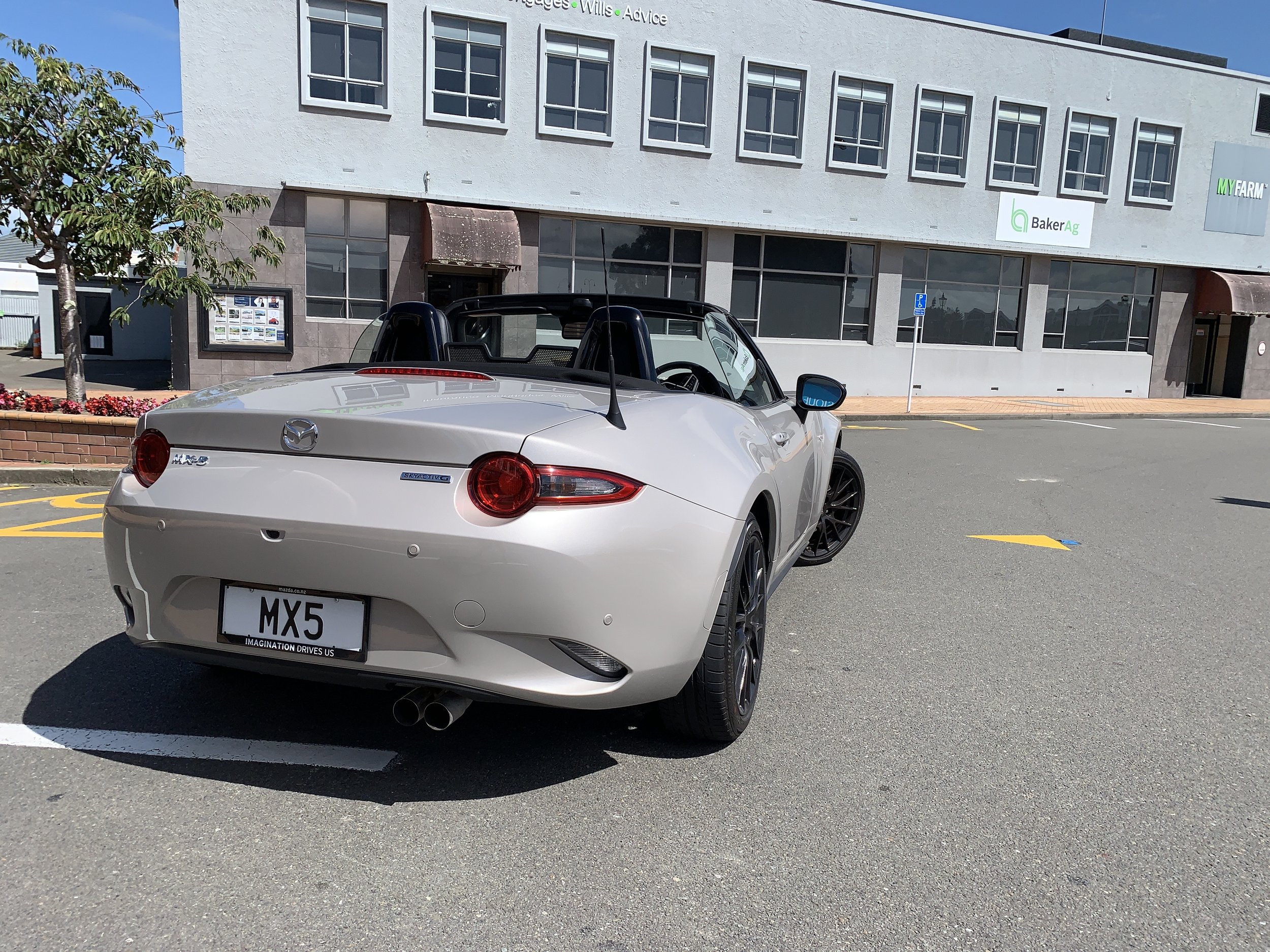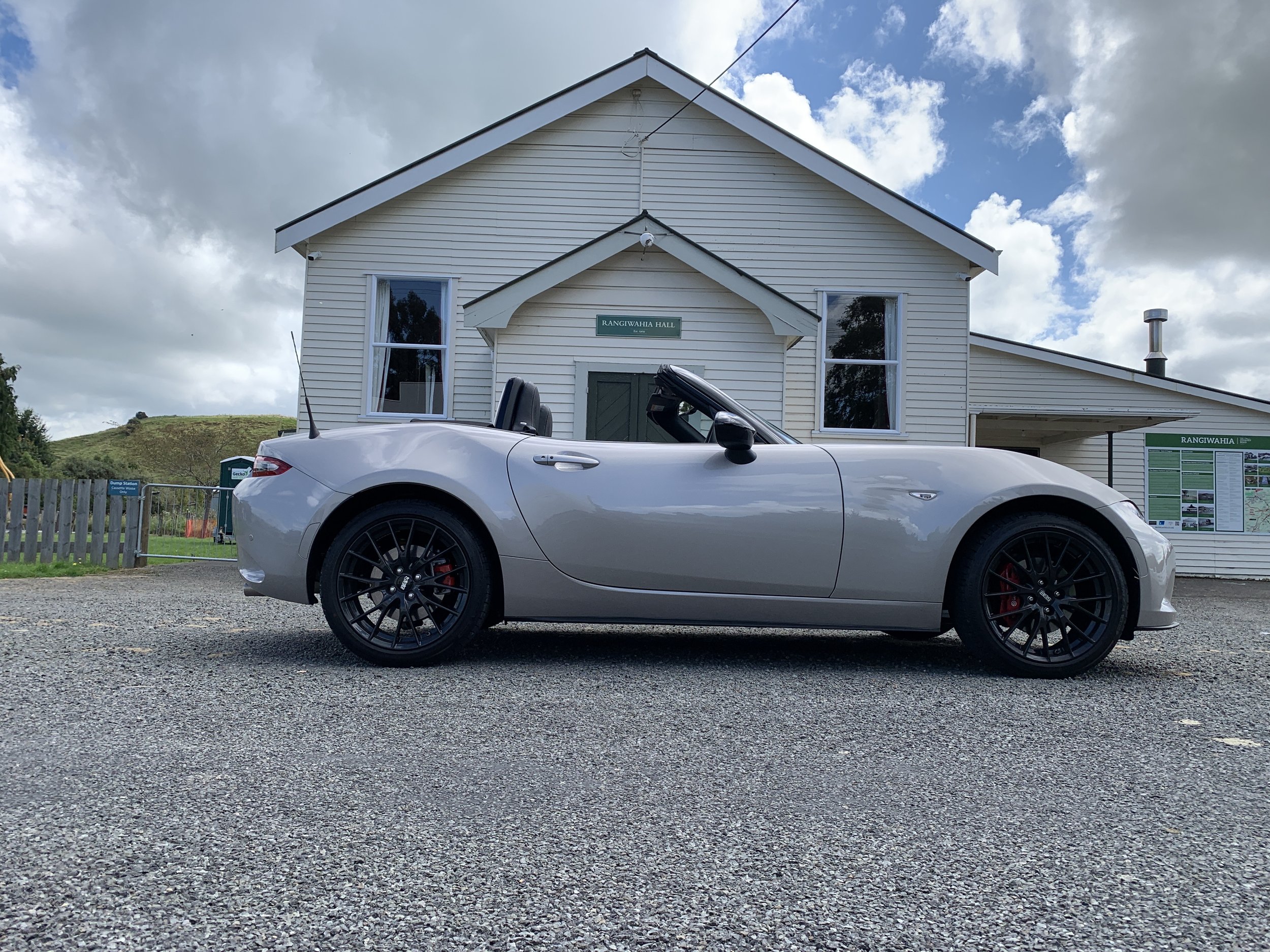Mazda MX-5 GT roadtest review: Evergreen, ever great
/The best of its kind just keeps getting better.
Price: $58,290.
Powertrain and performance: 2.0-litre petrol four, 135kW/205Nm, 6-speed manual, RWD, Combined economy 6.8 litres per 100km.
Vital statistics: 3915mm long, 1235mm high, 2310mm wheelbase, luggage capacity 127 litres, 17-inch alloys.
We like: Still unsurpassed, KPC sharpens its famous agility.
We don't like: Price has increased.
TRADITIONAL hand-made Persian rugs have an intentional, yet often all but imperceptible flaw because the Muslim artists feel only Allah has the right to create perfection.
I suspect the same time-honoured tradition applies to the world’s most perfect affordable sports car, but for different reason.
A simple statement of immutable truth. The MX-5 is in its best form as Mazda first produced it and as tested here, more than three decades on from that landmark moment: as a manual, two seat rag-topped roadster.
If you have in your garage a version with a folding hardtop and, or, an automatic transmission. Well, bully for you. You’ve got a nice car. Brilliantly attuned, wonderfully engineered, handsomely styled. But still, ultimately, second-best to the real deal.
The one that, through demanding more driver involvement, ultimately delivers better driving enjoyment is the one on test; the GT, which quite rightly provisions in that optimal stickshift, soft top recipe. It is simply stunning. But it is also, ever so slightly, imperfect. Which didn’t annoy me in the slightest.
The ‘how’ I’ll get to. The ‘why’? It’s just a theory, but I like to think that making it an example of glitch art an intention, a cunning low-key back-up plan to be used should the brand’s passion for producing it ever wane.
The chance of that remains gloriously slim. Recently, a company high-up assured media that even though there’s not yet commitment to the technical make-up of the next-generation version, the MX-5 will live on. Fantastic news.
Mazda’s chief executive in Europe, Martijn ten Brink, said the current car, first launched in 2015, will continue to be updated and is under no threat of being taken off sale from emissions or other legislation. Because?
“… people are passionate about this car in Mazda,” he said, adding: “Of course, as you can imagine, people have opinions on which direction it should go. So, I’m very curious where it will end up, but it will definitely remain part of the line-up.”
That ongoing commitment is reflection of the enduring love Hiroshima holds for their pet. By rule of thumb, allowing passion to over-ride pragmatism is dangerous ideal in this game. Being blinded by love can lead to wayward decision-making. But not in this instance.
It’s been obvious for some years the bean-counters’ views are not considered relevant in respect to this car. Were that the case, the MX-5 would surely have been quietly curtailed long ago. Just as its only serious Japan Inc. challenger, the Honda S2000, was. As celebrated as it is – and deserves to be – the MX-5 is no cash cow these days. In this country, it’s the brand’s lowest volume product.
That seems awfully unfair, I know. All four generations of this car have been great. The original NA has become an appreciating collector asset (I so glad we own a rather nice road-going one, that’s twin – in solid red colour at least – to the one I race). The ND on test here, as a complete package but particularly for the dynamic edge, is the best of its generation.
Would I call it absolutely perfect? No, and neither would the crew who developed it. For this reason: I’m sure they have recognised that a car perceived to be as good as it’ll ever get is also a car without a future. If they just leave a flaw, one so small and inconsequential that you might not even notice it, then it lends a reason to try again. To make it just that little bit better still.
I’m sure that, for this reason, there might yet be another refresh for the ND, in which the sole shortcoming I can raise about the car in its on-test state might be sorted.
It’s to do with the boot release operability being not quite right in that it seems only to work via the remote. That cannot really be the case; there MUST be a mechanical back-up because, even though the boot capacity is very modest, it’ll be subject to some kind of law that demands a circumvention. But where it is, I have no idea. And the handbook was no help, either.
This was hardly ruinous to the driving experience, of course. Frankly, there are few better times to be had than driving an MX-5. That’s why we love our NA and will likely never quit it.
In respect to that allegiance, the timing for this try-out was perfect. We used to be active in the national MX-5 club scene but, after I started racing one with frequency and it became a situation of Sunday racing versus Sunday drives …? Well, something had to give. I still stay close to the local chapter and, when the guy (whose name, by chance, is Guy) asked for help to organise a route for an upcoming drive outing, I was glad to help. I had a route (through the top part of the Manawatu) in mind and this seemed the perfect car to use for running the course.
It was. For all sorts of obvious reasons, the MX-5 clearly isn’t the best choice car for truly long distance driving, but for fun-minded excursions on the right kind of day it’s perfect.
Even for big blokes. The MX-5 before this one, the NC, was the biggest; the dimensional differences are striking when you compare with the ND, a car which reverted back to original thought about compactness, to extent it basically occupies the same road space as the original, incredibly pert NA. They’re also close on weight; these cars weight barely more than a tonne.
Where the NA and ND differ entirely, though, is in respect to cabin space and comfort. I’m not the most sylphlike of drivers, and I’m 1.8 metres’ tall; with the NA, I hate driving with the roof up, because my head is rubbing the lining and visibility is extremely limited.
The ND - the first MX-5 in which it’s truly easy to not only neatly fold away the roof in a single arm movement, but also lift it – also feels very enclosed with the top buttoned down, but there’s genuine headroom and, when it’s in open air mode, I don’t feel the slipstream’s blast against my forehead.
And even for a gangly fat bloke, the driving position is much better. It’s very similar, in fact, to my NA race car, where my race seat is much lower to the floor than the standard item, which in turn improves the whole feet-to-pedals, hands-to-the-wheel side of things. In both, my sightline is through the screen’s centre.
Sure, though not tight nor uncomfortable, it’s cosy. I still do find myself feeling a bit like an ogre, bashing my hip on the way in and knocking my knees and elbows against the hard plastics of the door, dashboard and armrest. Egress without awkwardness is also an art. But you suffer for its art, and gladly so.
The latest version of ND has the same 2.0-litre petrol four as previously, in identical tune, but you’re not going to call it out. Sure, MX-5s can never stand accused of being over-powered, but rarely do they feel lacking. This one revs hard and has a eagerness to it; plus it sounds good; there’s just the right amount of bark without it standing risk of being the neighbourhood annoyance. The whole idea is to deliver just enough power to suit the chassis. And it does.
For 2023, Mazda has altered the GT specification. The 17-inch Gunmetal BBS forged alloy wheels, with 205/45 tyres, are a new choice that look fantastic. The latest car also continues with everything that came with the ND facelift of three years ago, so has Apple CarPlay and Android Auto, heated seats (a must-have for cold weather top-down driving) and a Bose audio system and automatic climate control. GT also adopts driver and passenger headrest speakers with a microphone that allows something I didn’t think was possible – coherent phone conversations on the move.
The last roadster edition I drove was in 2022; that was the ‘100th anniversary’ edition, built to celebrate Mazda’s parent company having been around a century (it really only started into serious car-making after 1945). The GT now has the same Bilstein sports dampers, Brembo front brakes with red callipers and a front suspension tower brace that first configured on that $51,095 celebration special, of which 100 came to NZ. Had I found the means, I would have bought one. Burgundy interior notwithstanding, it was wonderful.
Then again, perhaps now I’d have considered trading up to the 2023 roadster, as it’s even better.
All MX-5 models now achieve something I’ve always been intrigued by; Kinematic Posture Control (KPC). It’s torque vectoring by braking, with the intention of achieving the same effect for rear-drive cars that Mazda's proprietary G-Vectoring Control Plus (GVC Plus) does for front-drive.
The concept of KPC is that it’ll works in conjunction with the car's ‘anti-lift’ suspension architecture and applies gentle brake force to the inner rear wheel during fast cornering. The intention is that, by so, it suppresses body roll and make steering response more linear through tight or rough corners.
Gimmick or Godsend? I’ve always enjoyed the darty directness of MX-5 tuning for rhe road and, in racing, have learned how to enhance that even further. Basically a 101 with the competition car is to unhook the rear sway bar, which has the doubling effect of setting the rear and reducing potential for in-side rear wheelspin on tight corners (Manfeild’s hairpin is the nemesis for that). The final touch is dabble with the adjustable Gaz shocks to get the best out of our Hankook control rubber (which is also quite pressure sensitive). When the car is in the zone, it’s incredibly nimble and secure. When it’s not quite right, it’ll either understeer or kick out the rear.
You cannot do any of that with the road car; even the Bilsteins are non-adjustable. But the KPC seems to approach the same kinds of challenge from a different angle, with similar outcome. Yes, the car is more settled with it. There’s no doubt about that. The tail is less prone to wag; in general, it is sharper on turn-in and perhaps you can get more power more quickly, on corner exit. However, there is an aspect of KPC that does take used to. You can feel it dragging down the speed on the inside rear; it’s very subtle, but it is noticeable. It’s not wrong, you understand why it is doing it, but it does feel a bit weird.
The car ate up the route I’d devised so hungrily I actually considered repeating it just for fun. But time was against me. Still, I hope the fanbase enjoys the day. It’s only 180kms but a good work out for the transmission, steering wheel, the tyres and brakes, packed with the twists and turns and short straights that really bring out the car’s classic character and remind why weight, or rather the lack of it, is so central to the MX-5 being as good as it is to drive.
Long may that continue.























